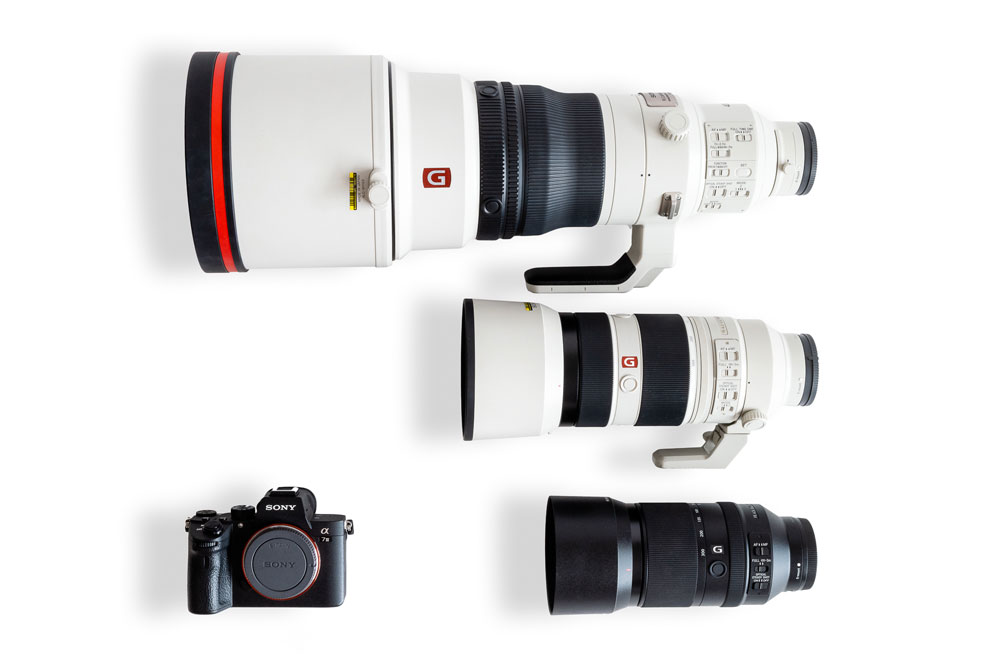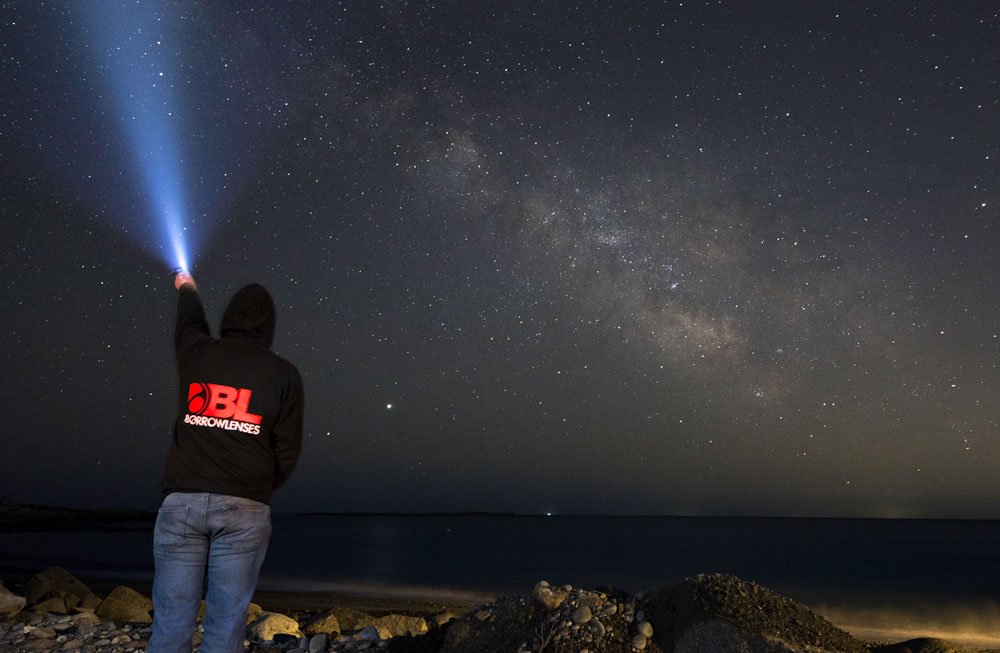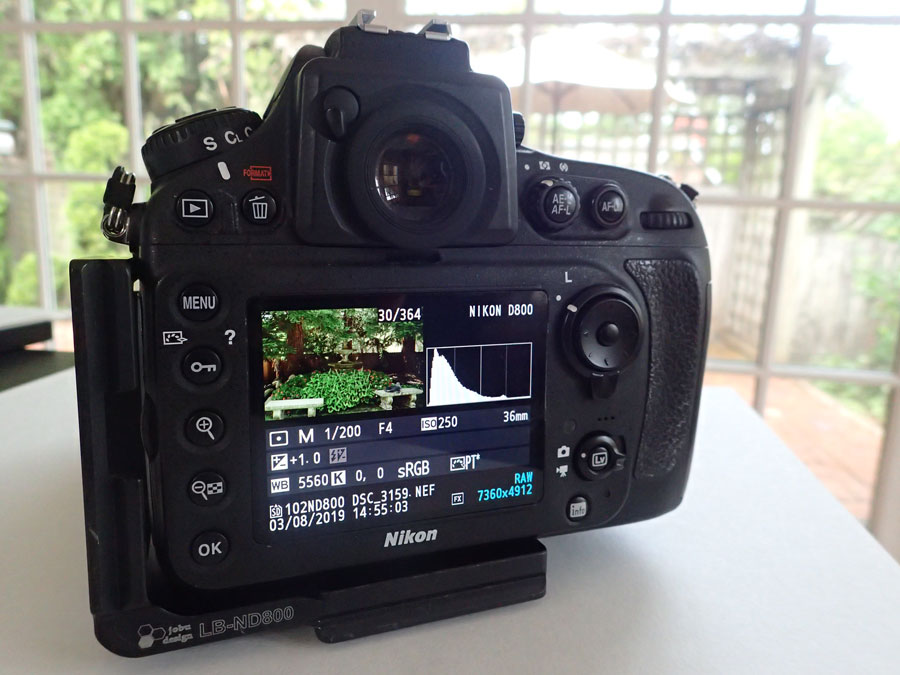
Choose the Right Sony Telephoto Lens for You
August 31, 2020
How to Photograph the Milky Way
August 31, 2020
When using a traditional film digital camera, to adequately expose your shot you experienced to rely on an analog light-weight meter needle. In advance of the advent of the electronic digicam, the light meter (regardless of whether in-camera or as an external instrument) was the only suggests of gauging appropriate publicity (other than memorizing reciprocity tables). Modern electronic cameras have this, way too, and in various places:
There is a more thorough way to see if your scene is effectively uncovered though. Even though the built-in meter is fantastic for immediately telling you regardless of whether you are above or underneath uncovered, it is not fantastic at telling you about highlights and shadows. This is wherever the histogram arrives in!
What is A Histogram?
A histogram is a bar graph showing the frequency distribution of values in a set of details. It appears as a clean curve considering the fact that there are generally a significant range of information factors (bars) on the graph. A whole lot of us may well feel of histograms as only a pictures matter, but histograms are utilized in all types of investigate. Histograms are just bar graphs other than each “bar” signifies a vary of values (or intervals, referred to as “bins”) and not just 1 position of information. In images, there are luminosity histograms and shade histograms. Luminosity histograms present the distribution of brightness amount of pixels overall, even though coloration histograms present this distribution for red pixels, blue pixels, or eco-friendly pixels.
Types of Histograms in Images
When photographers listen to “histogram” they are actually hearing about one particular of the sub-sets of histograms: luminosity histograms and color histograms. But a ton of people just say “histogram” for brief.
Luminosity Histograms
Luminosity histograms (also identified as “image histograms”) plot a range of pixels (“bins”) for achieve tonal price. This is useful to us mainly because we can then get an idea of the tonal distribution of our graphic at a glance. In other words and phrases, the histogram tells us regardless of whether any aspect of our image is way above-uncovered (blown-out) or less than-uncovered (blacked-out). Thoroughly blown or blacked areas of an picture just can’t be recovered in post processing – even if you shot in Raw. It is vital to cross-check out your histogram with your light meter for the reason that your metering may possibly nevertheless say your scene is overall “exposed” while continue to having pieces of the scene blown-out/blacked-out.
In a luminosity histogram, the bottom horizontal axis of the graph depicts the bins of pixel brightness, from dim (still left) to brilliant (right). The vertical axis shows the frequency (sum) of graphic pixels in each brightness bin, where better traces of the graph’s curve are a lot more pixels, and lower are a lot less. If you come across it tricky to remember which facet of the graph represents dim vs gentle, imagine about black and white photography: we always refer to it as “black and white” photography and not “white and black” photography. When prepared, that reads remaining to proper – same route as on the histogram.
Down below is an example of three luminosity histograms, a dark image (left), a normal image (centre), and a shiny image (right). The shape and place of the luminosity histogram’s curve gives info on the brightness or darkness of the photograph – if the curve is bunched up to the still left, the image is probably darker than it is mild if the curve is bunched to the correct, the graphic is brighter than it is dark.
What this usually means in conditions of what’s likely on with exposure is that a dim graphic (a lot more region of the picture is darkish than vivid) will have a lot more taller stacks of pixels creating a increased curve on the still left side of the histogram, whilst a shiny graphic will have far more stacks (and hence the bulk of the histogram’s curve) to the right. An evenly exposed graphic, with equivalent pieces dim and equivalent sections light, will have a “bell curve” formed histogram, with the bulk of the details in the center of the vary of darkish to vivid.
Color Histograms
Colour histograms (also termed “RGB histograms”) clearly show the distribution of brightness amount (frequency) of purple pixels, blue pixels, or environmentally friendly pixels. Here’s an example from Canon:
If an unique channel’s curve is bunched up to the still left facet of the RGB histogram, that color is darker and a lot less outstanding in the graphic (i.e. information and facts on that colour is lacking). If the curve is pushed to the proper, the color is denser and brighter (there is ample or even much too a great deal information on that coloration – it is around-saturated and does not have a sleek gradation). Color histograms are far more frequently paid out consideration to in article-processing vs luminosity histograms which are a very important instrument when shooting.
Wherever to Uncover and Perspective Histograms on Your Digital camera
Just about every producer is different, but most modern DSLRs and mirrorless units will display the histogram the two in Stay Look at before getting a photo and through Picture Evaluate (playback). With Canon, you can review the histogram dwell as you shoot by moving into Live Watch manner (Begin/Stop button on the 5D Mark IV), then you cycle via the Information button until eventually it is exhibited on the center suitable of the graphic. This will work ideal if “Exposure Simulation” is turned on in the shooting menu.
When applied with Dwell Check out and Exposure Simulation, the luminosity histogram supplies an instant, effective instrument to promptly adjust publicity by modifying any of your three variables (shutter pace, aperture, or ISO), which “pushes” the histogram to the right (brighter) or “pulls” it to the left (darker). You can also “play” (Picture Evaluate) an graphic you previously took and then cycle by means of the Facts button to check both the Luminosity and the RGB histogram.
Below are three individual pictures of the very same scene, bracketed down in publicity, with the luminosity histogram demonstrated beside the graphic as it is reviewed on the Lcd screen of a Canon 5D Mark IV camera:
 Look at your camera’s guide to determine how to perspective your histograms.
Look at your camera’s guide to determine how to perspective your histograms.
How to Examine a Histogram
The true energy of the histogram will come when you check it as you shoot. The astute photographer understands that publish-processing, whether or not accomplished by way of Adobe’s Camera Uncooked (Lightroom/Photoshop/Standalone CR) or the native digital camera processors (Nikon Studio/Canon Electronic Photograph Expert), is accomplished with algorithms (math equations) on the knowledge collected by your camera’s sensor. In theses digital darkrooms, relocating developer sliders around or working with equations to brighten or darken an impression possibly won’t do the job or will yield undesirable results if there isn’t any facts there to start out with. These extremes are apparent not when the histogram is simply bunched up to 1 aspect or the other, but when it is climbing the wall! If the graph has rocketed up just one side, you are heading to have difficulty with the file afterwards on.
Thus, the luminosity histogram is what to view when capturing, significantly although capturing outdoors. If the histogram has a portion of facts “climbing the wall” on the remaining facet, the picture is underexposed and has regions that are pure shadow (RGB ,, with zero shadow depth). No total of article-processing will incorporate usable facts in these parts.
Conversely, if the histogram has areas that are climbing the wall to the proper, then the graphic has pure white spots or is overexposed, with RGB Values of 255, 255, 255. This could be on intent if the image has areas of clouds or snow that by their nature are pure white and deficiency a good deal of spotlight depth. But once again, no volume of submit-processing will deliver out any useful information and facts listed here.
There are eventualities in landscape photography wherever you could want pure black or pure white. For example, if you shoot with the intention to build black and white pictures that mimic the Zone process pioneered by Ansel Adams (exactly where you goal to have all tonality levels from pure black by means of pure white). Most likely you shoot business photos with folks or objects where by excessive shade saturation is important. If so, you will want to thoroughly watch your RGB channel histograms since the particular person shade channels require to have the right amount of gradation and/or saturation to deliver shade-accurate function to your clientele.
Expose to the Correct
There’s a philosophy in modern-day digital landscape pictures referred to as “Expose to the Right” or ETTR. Made in 2003 by photographer Michaell Reichmann and Thomas Knoll (Photoshop developer and creator of the Digicam Uncooked plug-in), ETTR prescribes changing digital Raw image exposures “to the right” (brighter) by adjusting shutter velocity or ISO to the position the luminosity histogram just commences to clip (climb the wall). To visualize reaching this place, you make mixed use of the luminosity histogram and your camera’s “highlight alert” characteristic, which is exactly where areas of the picture at this important level of publicity level will commence to blink.
In Canons, this can be discovered in the “Play” menu, Screen #3 (established to “Enable”).
You can still provide back again detail in these regions if a small part of the photographs “blink” as overexposed because histograms are created from a temporary JPEG preview of the Uncooked image to slash down on processing electricity needed in a camera’s electronics components in the Raw file there is nonetheless usable facts in these places even nevertheless the highlight notify suggests there is not.
To stay clear of this, find the fantastic publicity. If you believe in the ETTR philosophy, the fantastic publicity is when you see ~1-5% of your picture blinking with a emphasize inform and there is a pretty modest, or no, portion of the histogram climbing the remaining side of the graph (no pure shadows). This is how I established myself up for achievement in article processing with Digicam Uncooked in Lightroom.
Listed here is an instance of the 4 Bristlecone images with “blinkies” on/off and their accompanying histograms seen for the duration of image critique on the back of the camera. These 4 frames ended up shot from brighter to darker:
 Histograms and Editing
Histograms and Editing
Acquire a glimpse at a bracketed set of Raw landscape photos, shot in the Historical Bristlecone Forest in California’s White Mountains (you can down load these pictures listed here from Dropbox). In this late afternoon lighting, the whole dynamic vary from the bright parts of the clouds as a result of to the dim locations of the tree was far too terrific for my camera’s sensor – I could not set the publicity to capture suitable info in just one one frame. So, with Dwell See on and Emphasize Inform enabled, I monitored my histogram and bracketed 4 independent photos to seize the whole dynamic array of the scene.
Lightroom demonstrates the luminosity and RGB histograms laid atop 1 a further in the Build module. The luminosity histogram is in the entrance and is white and the RGB histograms are driving the luminosity histogram. Lightroom has a further practical function that identifies pure black pixels in Blue and pure white pixels in Pink if you simply click the triangles at the upper corners of the histogram.
At the other end of the luminosity scale, here is one more picture showing spots of pure shadow:
If you only want to see the luminosity histogram in Lightroom, simply just temporarily desaturate the colour to -100.
To produce the concluded version of this picture, I employed the “Merge to HDR in Photoshop” feature and generated a 32-little bit DNG file designed from a mixture of the 4 photos, with the complete and comprehensive dynamic variety:
Continue to keep an eye on your histograms as you get the job done on an graphic in Lightroom, particularly as you regulate the shadows and highlights sliders, and the white/black sliders. Every single slider adjusts the publicity values in the corresponding element of the histogram, which you can see by shifting your mouse around the histogram by itself. The “ISO 100 | 20mm | f/13 | 1/60th” information will disappear and be replaced by “Blacks | Shadows | Publicity | Highlights | Whites” and clicking and dragging on the histogram will trigger the corresponding slider benefit to adjust.
With Black and White Conversions, you can also look at the histogram of the colour picture and alter the sliders to enhance the contrast if you have an image lacking in distinction in the lighting conditions when you captured it. There is home to maximize the publicity to the suitable to assure that the drinking water goes to pure white in the conversion.
I usually leave the shadow warn on in Lightroom’s histogram when operating night time images and use this as a tutorial to how much I can increase gentle into the shadow spots in advance of sound gets too superior and renders the graphic unusable I also deliberately course of action regions of the sky concerning stars to be pure black.
Histograms are a highly effective resource in electronic images. If you find out to observe them even though shooting and enhancing images, the feed-back they deliver prospects you to not only the perfect exposure but also allows you develop additional appealing landscapes.
Tags: Finest Digital camera Settings, metering Past modified: June 2, 2020














